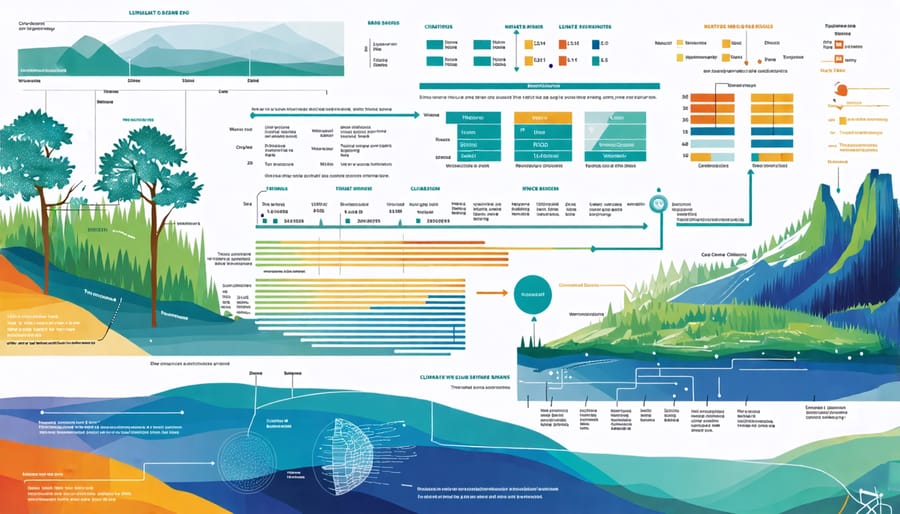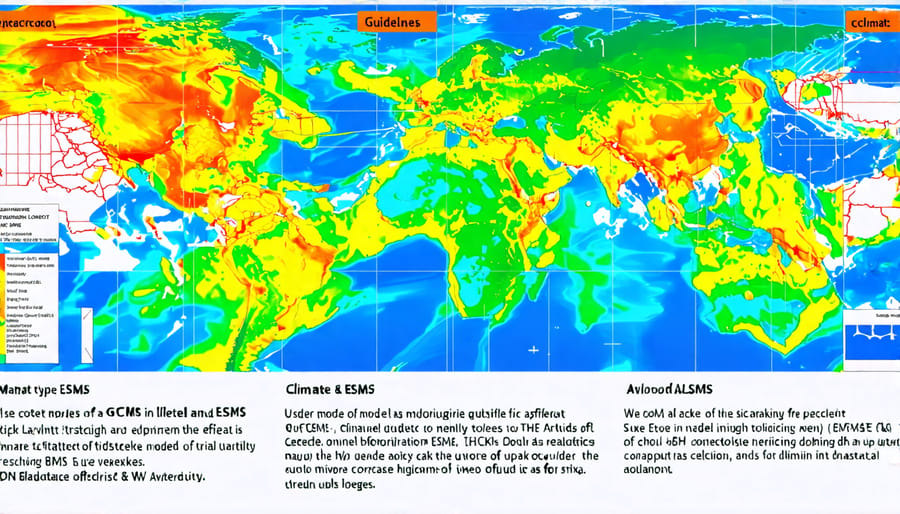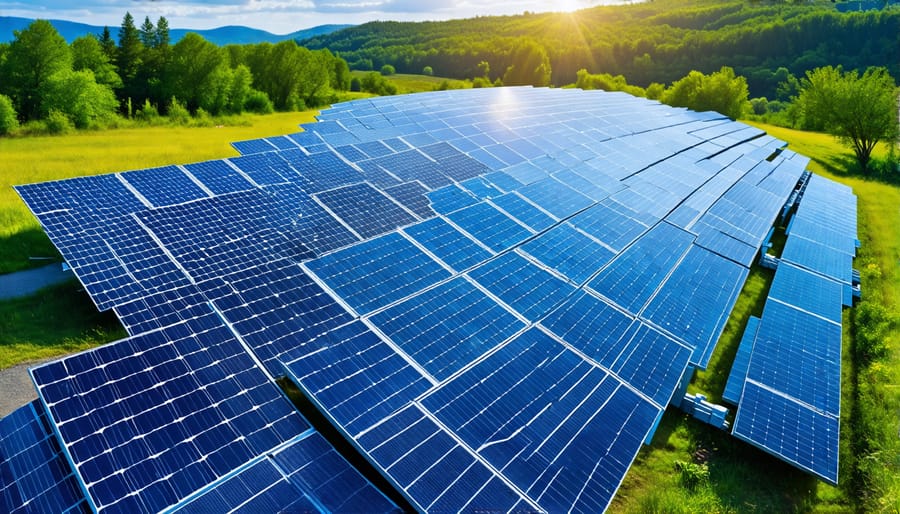Analyze climate models to gain insights into future environmental shifts. Understand their core components—such as temperature, precipitation, and sea-level changes—and how they make short- and long-term forecasts. Utilize these predictive tools to evaluate the viability and impact of renewable energy projects, assessing potential climate scenarios that affect performance, reliability, and resource availability. Engage with experts to uncover new developments in climate modeling and their implications for sustainable energy, informing strategic decisions for policy-making and personal initiatives toward a greener future.
The Science Behind Climate Models
Data Inputs and Simulation Processes
Climate change models serve as essential tools in projecting future climate conditions by integrating vast arrays of data and complex simulation processes. These models rely on a variety of data inputs, including historical climate records, greenhouse gas emissions, solar radiation, and atmospheric composition. These inputs are gathered from numerous sources such as satellite observations, ocean buoys, and meteorological stations, ensuring a comprehensive dataset that captures the dynamics of Earth’s climate system.
Once collected, this data undergoes processing using sophisticated algorithms within advanced computer simulations known as General Circulation Models (GCMs). These simulations incorporate the laws of physics to replicate the interactions between the atmosphere, oceans, land surface, and ice. They provide projections of climate variables, like temperature and precipitation, under different emission scenarios. Climate models are continuously refined through validation against observed data, enhancing their reliability and accuracy.
By simulating potential future climates, these models allow policymakers, educators, and renewable energy advocates to explore viable strategies for mitigating climate change impacts. Ultimately, they offer an optimistic vision of our capacity to curb detrimental environmental changes by informing sustainable energy solutions and adaptation measures.

Types of Climate Models
Climate models are essential tools for understanding and predicting the effects of climate change. Among the most widely used are General Circulation Models (GCMs) and Earth System Models (ESMs), each with unique capabilities and applications. GCMs are comprehensive tools that simulate the Earth’s atmosphere and oceans, focusing on interactions like heat exchange and moisture distribution. These models are pivotal in predicting large-scale climate patterns and providing insight into potential changes in global climates.
Earth System Models take this a step further by integrating additional components such as biogeochemical cycles, land surface processes, and even human activities, offering a more holistic view of the climate system. ESMs allow scientists to simulate complex scenarios, helping to understand how different factors might influence future climates.
These models are invaluable in guiding policies and strategies for tackling climate change, especially in renewable energy. By projecting future climate conditions, they help policymakers and industry leaders make informed decisions about sustainable practices and technologies. As these models become increasingly sophisticated, they sharpen our focus on creating a resilient and thriving planet, fostering an optimistic outlook for the future of our environment.

Predictions and Their Implications for the Energy Industry
Impact on Renewable Energy Strategies
Climate change model predictions play a pivotal role in shaping renewable energy strategies by offering insights into future weather patterns, resource availability, and ecosystem responses. These models help predict changes in wind speeds, solar radiation, and precipitation, which are critical factors for harnessing renewable energy sources like wind turbines and solar panels. Armed with this information, energy planners can develop risk management strategies that ensure a stable and sustainable energy supply.
For example, a study in Germany has leveraged climate model predictions to optimize the placement and operation of its wind farms. By understanding potential shifts in wind patterns, Germany’s energy sector can adjust its infrastructure to maintain efficiency and reliability. Similarly, in the realm of solar power, climate models have been employed to predict cloud cover variations and temperature changes, enabling solar farms in California to enhance their energy yield predictability.
Moreover, these models serve as a vital tool for policy-makers, aiding in the formulation of long-term plans that align with climate goals. By integrating predictive insights, countries worldwide can enhance their renewable energy developments, minimize financial risks, and achieve sustainability targets. Thus, the accurate predictions provided by climate models are crucial for driving innovation and securing a resilient future in renewable energy.
Case Studies: Wind and Solar Initiatives
Climate change model predictions play an essential role in shaping today’s wind and solar initiatives, offering actionable insights that drive sustainable energy projects. One compelling example is the Horns Rev 3 Wind Farm in Denmark. Climate models accurately predicted wind patterns in the North Sea, enabling the strategic placement of wind turbines for maximum efficiency. This initiative underscores the importance of leveraging data to harness wind energy effectively.
Similarly, in Morocco, the Noor Ouarzazate Solar Complex stands as a testament to the power of climate modeling. By analyzing long-term solar radiation data, experts could predict the potential productivity of solar farms in this sunny region. The complex has become one of the world’s largest concentrated solar power plants, significantly contributing to Morocco’s renewable energy targets.
These case studies illustrate the practical application of climate science, where predictions guide the efficient deployment of renewable resources. By understanding the dynamics of local climates, planners can optimize projects, ensuring long-term viability and sustainability. As the global energy landscape evolves, learning from successful initiatives and understanding the complex interplay of wind vs. solar energy can inspire innovative solutions that combat climate change and promote a cleaner future.

Overcoming Challenges and Criticisms
Understanding Model Limitations
Climate models are vital tools in predicting changes in our environment, yet they come with limitations due to the complex nature of Earth’s systems. These models aim to simulate future conditions based on various scenarios, but they cannot account for every variable, such as unpredictable natural occurrences or socio-economic shifts influencing renewable energy development. As technology advances, model accuracy improves, refining forecasts that inform policy and decision-making in areas such as renewable energy cost dynamics. One real-life example is the evolving accuracy of hurricane predictions, which has improved significantly over the past decades, thanks to enhanced data collection and computational power. Interviews with climate scientists reveal a dedication to developing more sophisticated models to reduce uncertainty and deliver actionable insights. While current models provide robust frameworks for understanding potential climate futures, ongoing research and data integration continue to refine their predictions and applications, offering optimism for informed global strategies in tackling climate change.
Expert Insights and Innovations
Ongoing innovations in climate change models are unlocking new levels of accuracy and reliability, according to Dr. Maria Chen, a leading climate scientist. In a recent interview, she highlighted how advancements in machine learning and enhanced data collection are overcoming previous limitations. “Incorporating AI helps us process vast amounts of climate data efficiently,” she explained. This is crucial for refining predictions on temperature rises and extreme weather events, enabling us to make more informed decisions about sustainable energy practices.
Dr. Robert Lewis, another expert in the field, emphasized the role of satellite technology. “Satellites provide us with high-resolution data that was unimaginable a decade ago,” he stated, pointing out its importance in tracking changes in sea levels and polar ice. These technologies not only improve our understanding but also pave the way for proactive measures in renewable energy projects, aligning with global sustainability goals. These expert insights underline the crucial intersection of technology and environmental science in tackling climate change.
Looking Forward: The Role of Climate Models in a Sustainable Future
Climate models are invaluable tools in shaping a sustainable energy future. By offering insights into our planet’s complex systems, they enable us to predict climate changes and assess their potential impacts. These advanced models integrate data from multiple sources, simulating how different variables interact and influence climate patterns. As we strive for a future of wind energy and other renewables, climate models can guide strategic investments and development efforts.
Continued investment and research in climate models ensure they remain accurate and reliable. For example, these models have successfully predicted trends like increasing global temperatures and more frequent extreme weather events. By providing foresight, they help policymakers, environmentalists, and energy developers make informed decisions. For renewable energy enthusiasts, understanding where wind farms will be most productive or how solar output might shift seasonally is crucial. This data-driven approach maximizes efficiency and sustainability.
Real-life applications of climate models are widespread. Cities use them to plan infrastructure that withstands new climate realities. Farmers adjust practices based on forecasts, and energy companies optimize resources. Collaboration between scientists, governments, and industries, fueled by climate models, is essential. Expert interviews highlight the need for a global commitment to enhance model precision and accessibility.
Furthermore, educational initiatives play a vital role in spreading knowledge about the capabilities and limitations of climate models. By equipping future generations with these insights, we cultivate a society that values scientific contributions to sustainability. Optimistically, as models evolve, they promise clearer pathways to energy solutions that harmonize with environmental goals. The aspiration for a sustainable future thus relies heavily on advancing these technologies and applying their predictions to tangible outcomes.





